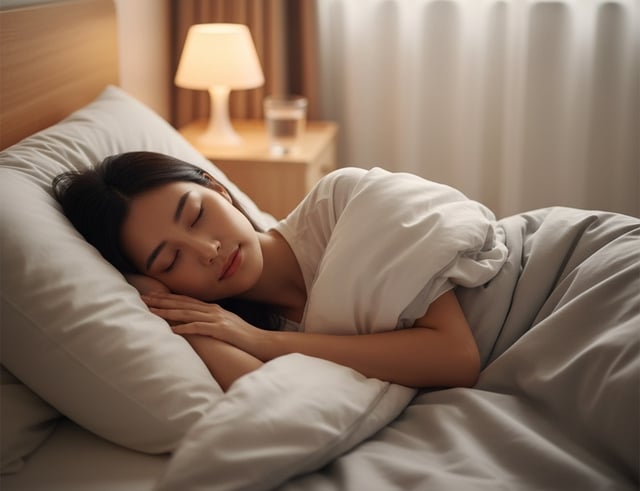However, not all comfortable sleeping positions are good for the spine. Maintaining the wrong sleeping position can change the natural structure of the spine, putting pressure on the vertebrae and affecting long-term health, according to the Hindustan Times .
Dr. Rajneesh Kant, an orthopedic and spinal surgeon in India, said that the way you sleep determines the spine's ability to rest and recover.
During sleep, the body repairs its muscles, ligaments, and joints. If your sleeping position puts uneven pressure on your spine, the vertebrae can become misaligned and nerves can become compressed.
When this condition persists, people who sleep in the wrong position not only experience stiff necks and back pain in the morning, but also run the risk of chronic back pain, neck pain, and postural disorders in the long term.

The two recommended sleeping positions are lying on your back with a small pillow under your knees or lying on your side with a pillow between your legs.
Illustration: AI
Sleeping on your stomach puts pressure on your neck and lower back.
The recommended position to avoid is lying on your stomach. This is a common habit because many people feel comfortable lying face down on the bed. However, this position puts a lot of pressure on the neck and back. When lying on your stomach, the head is forced to turn to one side for a long time to breathe, causing tension in the neck muscles and compression of the nerves in the cervical spine.
The prone position also causes the lower back to curve abnormally, putting great pressure on the lumbar region.
Many people who have the habit of sleeping on their stomachs often have stiff necks, back pain or tingling in their hands due to irritated nerves.
According to Mr. Kant, this is an unnatural posture and in the long term can distort the spinal structure, affecting the body's ability to move and recover.
Sleeping curled up can cause back pain and reduced flexibility.
Dr. Kant believes that sleeping in a hunched position can also be harmful to the spine if done regularly. When the knees are pulled close to the chest, the spine becomes too rounded, increasing pressure on the mid-back and lower back.
When the body is contracted in a curled-up position, deep breathing becomes more difficult, the hip flexors become tight, and the back muscles become overstretched. Over time, this leads to reduced flexibility, chronic back pain, and limited mobility.
Sleeping positions to protect the spine
According to Dr. Kant, the best sleeping position is one that helps maintain the natural curve of the spine and keeps the whole body aligned throughout the night.
Two recommended sleeping positions are lying on your back with a small pillow under your knees or lying on your side with a pillow between your legs. These positions help distribute your body weight evenly, avoiding putting pressure on your shoulders, hips, or lower back.
When the spine is kept in its natural position, the vertebrae, muscles and ligaments are given the opportunity to rest and recover. As a result, the person will wake up feeling more comfortable, less sore and more energetic.
Maintain correct sleeping posture to improve health
Dr. Kant emphasizes that sleeping posture is as important as sitting or standing posture in daily activities.
Maintaining the correct sleeping posture not only helps reduce the risk of back and neck pain, but also helps improve overall health.
When the body rests in the correct posture, blood circulates better, the nervous system relaxes and energy is regenerated more effectively.
Source: https://thanhnien.vn/bac-si-tiet-lo-2-tu-the-ngu-gay-hai-cho-cot-song-185251113000736666.htm


![[Photo] Prime Minister Pham Minh Chinh attends a conference to review one year of deploying forces to participate in protecting security and order at the grassroots level.](https://vphoto.vietnam.vn/thumb/1200x675/vietnam/resource/IMAGE/2025/11/12/1762957553775_dsc-2379-jpg.webp)




![[Photo] Highways passing through Dong Nai](https://vphoto.vietnam.vn/thumb/1200x675/vietnam/resource/IMAGE/2025/11/12/1762940149627_ndo_br_1-resize-5756-jpg.webp)































































































![Dong Nai OCOP transition: [Article 3] Linking tourism with OCOP product consumption](https://vphoto.vietnam.vn/thumb/402x226/vietnam/resource/IMAGE/2025/11/10/1762739199309_1324-2740-7_n-162543_981.jpeg)







Comment (0)